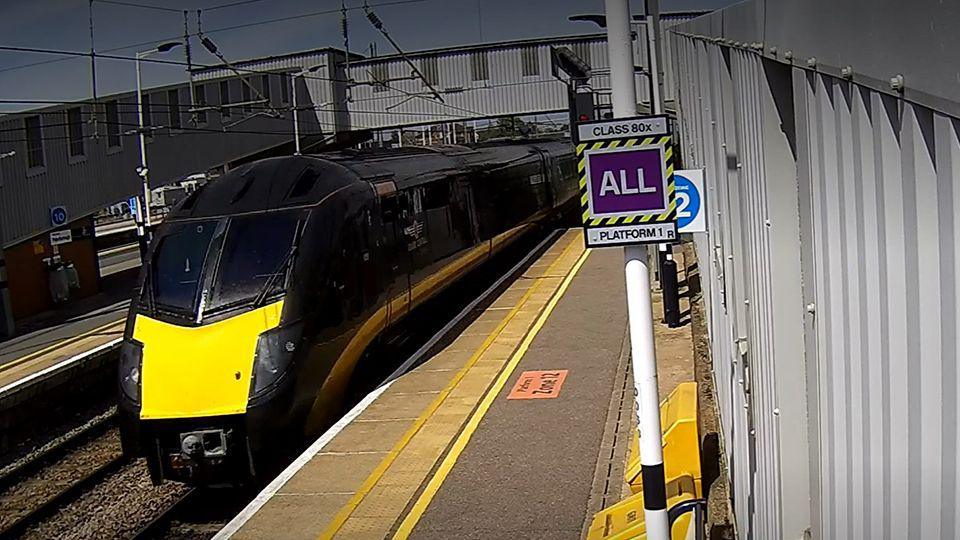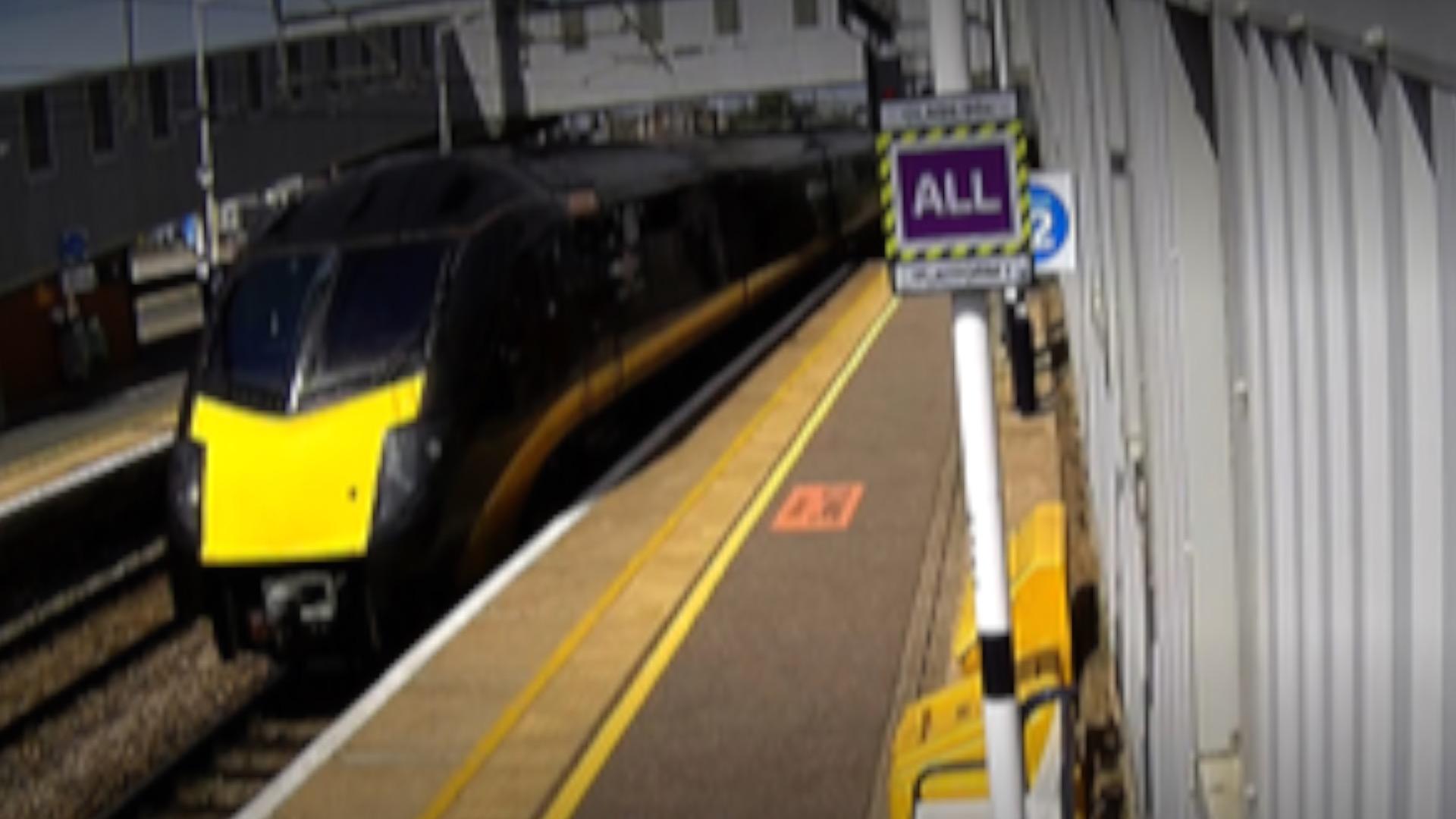Passenger injuries caused by train driver error

Passengers were thrown from their seats on a train travelling at more than twice the speed limit at Peterborough
- Published
An investigation has found train operators did not "effectively control" risks after passengers on a speeding train were thrown from their seats.
A Grand Central service from Sunderland to London approached a junction near Peterborough at about 65mph (104 km/h) - more than twice the speed limit - on 4 May.
The Rail Accident Investigation Branch (RAIB) said some people on the train suffered minor injuries as it went over points at Spital Junction.
Chief inspector of rail accidents, Andrew Hall, said it happened just 13 months after a "serious accident had been very narrowly avoided" in similar circumstances.
At 13:00 BST on 4 May, the 09:54 service passed over three sets of points.
The maximum permitted speed over the junction was initially 30 mph (48 km/h), reducing to 25 mph (40 km/h).
The data recorder from the train indicated it was travelling at 66 mph (106 km/h) as it crossed the points.
This let to sudden sideways movements.
The driver applied emergency brakes and the train did not derail and was not damaged.
The RAIB investigation said the driver "had not reacted appropriately" to a signal indicating that the train was to take a diverging route with a lower speed limit.
A similar incident occurred at the same location, 13 months prior, when a train crossed the 30mph junction at 76 mph; which could have caused the train to overturn.
"Thankfully a serious accident had been very narrowly avoided but 13 months later, in this incident, the same junction was crossed at 66 mph in similar circumstances," Mr Hall said.
"This, once again, reinforces why learning from previous accidents and incidents and taking effective action in response to them is a vital means of improving safety and avoiding repeating mistakes of the past."
He added an underlying factor was neither Network Rail nor the East Coast Main Line train operators "effectively controlled the risk of overspeeding at Spital Junction".
The RAIB also said the indicator signal may not have been "as conspicuous" as the main aspect of the signal when the driver noticed it.
The report , externaladded that Grand Central had not provided its driver with the necessary non-technical skills or additional strategies to manage the risk.
The company had not identified the risks associated with the signal in its route risk assessment, according to the report.
And it said Network Rail’s reliability centred maintenance regime also did not include a means to "effectively manage degradation" of junction indicator light signals.
The branch made four new recommendations to both Grand Central and Network Rail.
A Network Rail spokesperson said it was acting on recommendations, reviewing how to make signalling clearer, and how changes were communicated so they are fully understood.
"Our work on this is ongoing and we will further scrutinise our approach and actions in regard to the findings of today’s report," it added.
Sean English, chief operating officer for Grand Central, said: "The safety of our customers and our colleagues will always be our number one priority and we have fully supported and cooperated with RAIB throughout their investigation.
“We have already taken action to address the recommendations and are working closely with Network Rail to help ensure that lessons are fully learnt, and that all necessary measures are taken to prevent similar incidents occurring again.
“We would like to take this opportunity to apologise to all those on board our service that day, for what must have been a distressing experience.”
Get in touch
Do you have a story suggestion for Peterborough?
Follow Peterborough news on BBC Sounds, Facebook, external, Instagram, external and X, external.
More like this story
- Published8 June 2023

- Published27 May 2023

- Published11 May 2022
